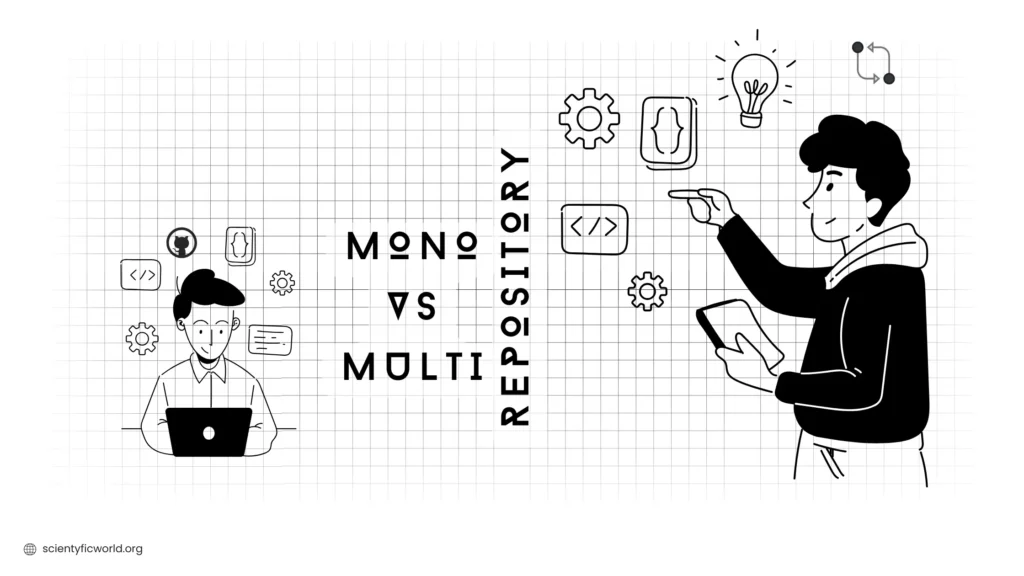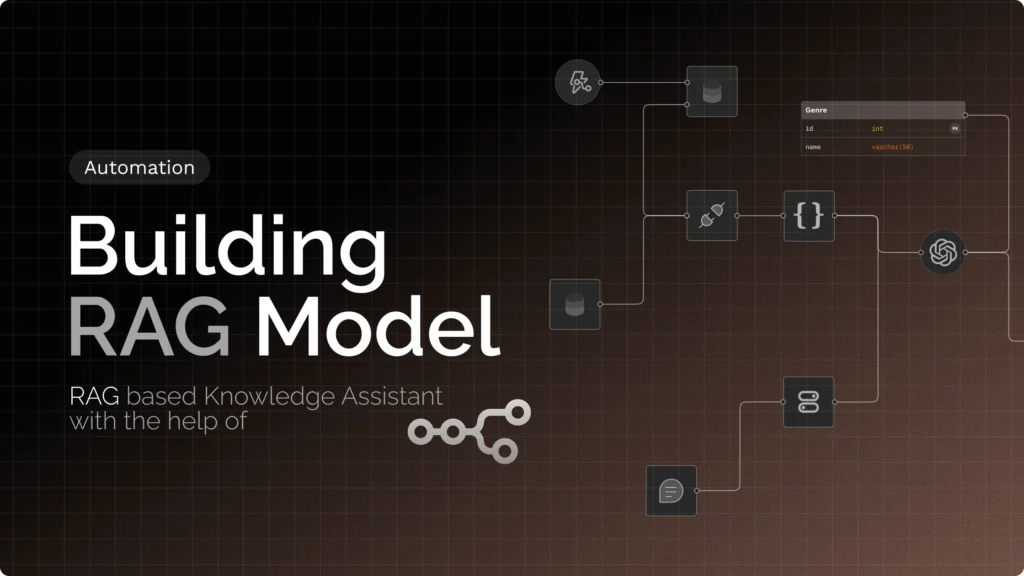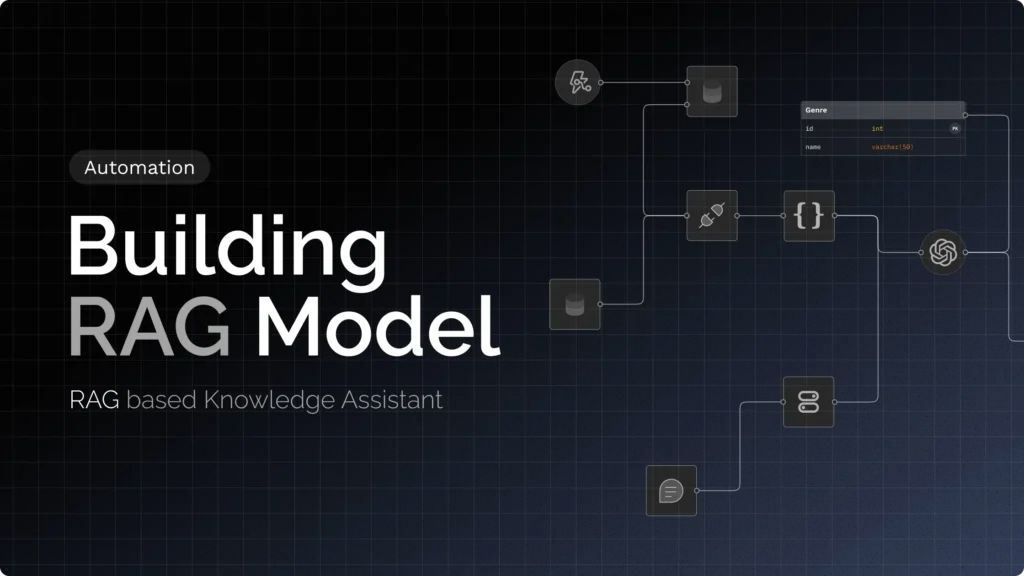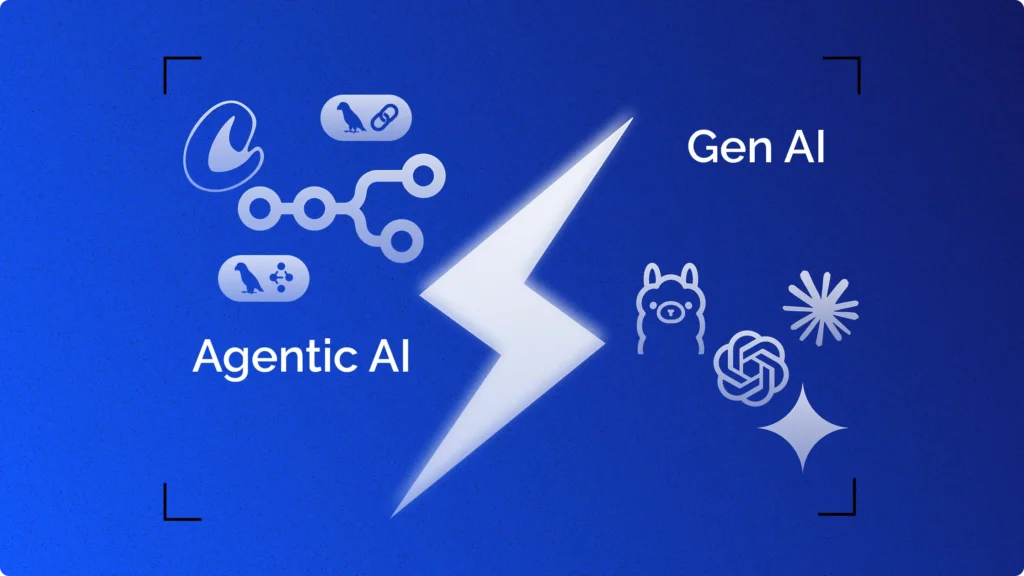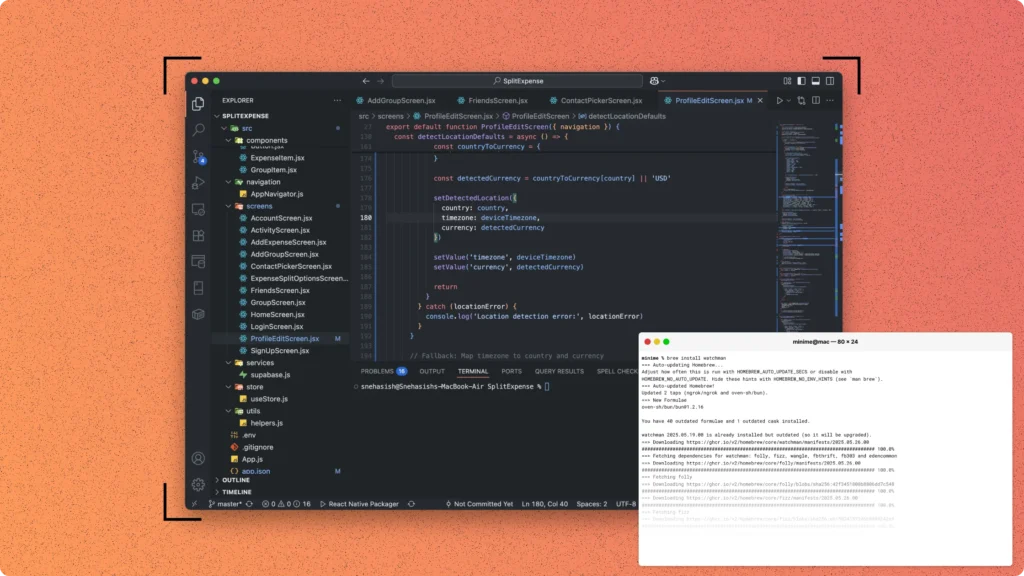Efficient repository architecture is essential for managing modern software projects, directly impacting collaboration, scalability, and code organization. As development teams grow and projects become more complex, the choice of repository structure becomes a critical decision for maintaining productivity and minimizing operational bottlenecks.
Monorepo architecture, where multiple projects coexist within a single repository, represents a longstanding approach that leading tech companies continue to rely on. Organizations like Google and Facebook use monorepos to encourage code reuse, simplify dependency management, and support collaboration at scale. In contrast, multi-repo architecture, with separate repositories for individual projects, delivers modularity and autonomy but may complicate coordination across multiple repositories. Monolithic architectures, defined by tightly coupled systems within a single codebase, retain relevance in some circumstances, though they often struggle to meet growing scalability requirements.
Data from a recent Stack Overflow Developer Survey highlights the growing adoption of mono repo setups. Over 35% of developers cite their advantages in handling interconnected projects. This trend underscores the need to understand the trade-offs and benefits associated with each repository approach.
In this blog, I’ll explore what mono-repo architecture entails and provide a detailed comparison with multi-repo and monolithic systems. Whether you’re evaluating the suitability of these structures for your team or planning long-term scalability, this analysis will offer the clarity you need to make an informed decision.
What is a Monorepo Architecture?
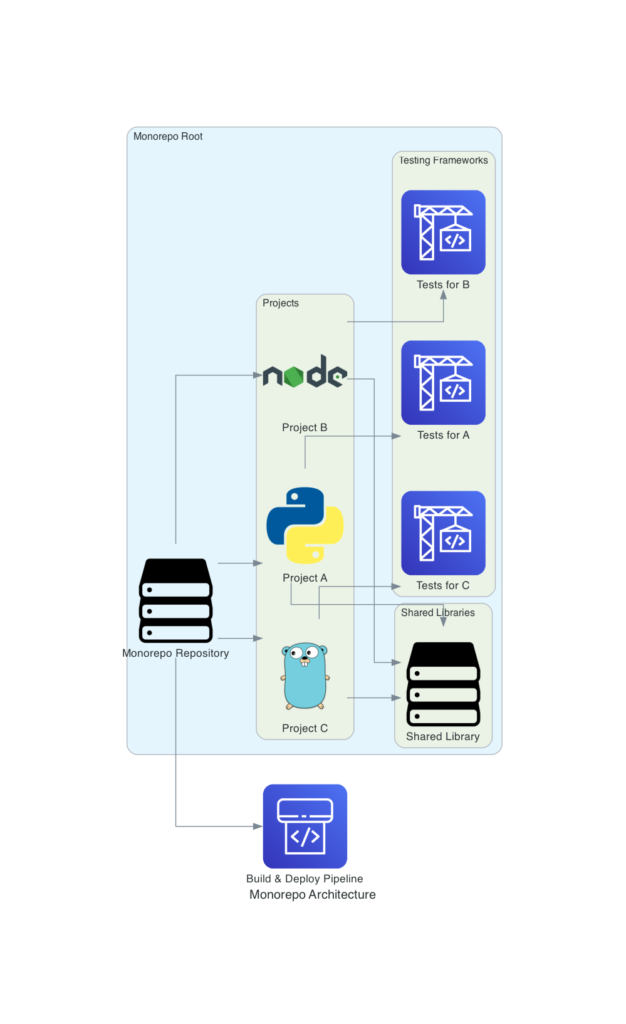
A monorepo architecture is a repository management approach where all the code for multiple projects resides in a single repository. Unlike a traditional setup where each project is stored in its own repository (multi-repo), a monorepo consolidates code, configurations, and dependencies into one unified location. This structure simplifies collaboration, encourages code reuse, and provides a centralized system for version control.
In a monorepo, teams working on different projects or services share a common repository, but each project retains its independence in terms of development, testing, and deployment. The architecture fosters seamless integration between projects, as shared libraries, dependencies, and configurations are easily accessible within the same repository.
Understanding the key characteristics of a monorepo architecture can help you determine if it’s the right fit for your development needs. Here are the fundamental traits that define a monorepo:
- Single Repository for Multiple Projects: A monorepo houses all code for various projects within one repository. This unified approach eliminates the need to manage multiple repositories, simplifying version control and access management.
- Shared Codebase and Resources: Projects within a monorepo can easily share code, libraries, and resources. This encourages code reuse and reduces duplication, leading to a more maintainable and consistent codebase.
- Unified Versioning: With a single version control system, all changes are tracked cohesively. This means that any update, whether it’s a bug fix or a new feature, is recorded in the same history, simplifying tracking and rollbacks.
- Simplified Dependency Management: Managing dependencies becomes more straightforward since projects can reference each other directly. There’s no need for complex dependency resolutions across different repositories or external package management systems.
- Atomic Commits Across Projects:Developers can make changes that span multiple projects in a single commit. This ensures that related updates are synchronized, reducing the risk of incompatibilities or broken builds.
- Consistent Development Workflow: Teams working in a monorepo adhere to the same development practices, tooling, and conventions. This consistency streamlines collaboration and reduces the learning curve for new team members.
- Easier Cross-Project Refactoring: Refactoring code that impacts multiple projects is more manageable. Since all code resides in one place, developers can update interfaces or shared components without coordinating changes across separate repositories.
Advantages and Disadvantages of Monorepo Architecture
Below is a detailed comparison of the advantages and disadvantages of adopting a monorepo architecture, presented in a concise table format:
| Advantages | Disadvantages |
|---|---|
| ✅ Simplified Code Reuse: Shared libraries and components make code reuse easy, reducing redundancy. | ❌ Large Repository Size: As the repository grows, its size can become difficult to manage. |
| ✅ Streamlined Dependency Management: Dependencies are centrally managed, avoiding version conflicts. | ❌ Tooling Requirements: Effective management often requires specialized tools, which can increase complexity. |
| ✅ Unified Version Control: A single version control system simplifies tracking changes across projects. | ❌ Build and Test Overhead: Changes in one area may trigger builds and tests for unrelated projects, increasing resource usage. |
| ✅ Efficient Refactoring: Global refactoring across projects is easier since everything resides in one repository. | ❌ Access Control Challenges: Managing access for different teams within the same repository can be complex. |
| ✅ Consistent Development Practices: Teams use the same workflows, tools, and conventions, improving collaboration. | ❌ Potential for Merge Conflicts: Multiple teams working on the same repository can lead to frequent merge conflicts. |
| ✅ Improved Collaboration: Centralized code fosters better communication and alignment among teams. | ❌ Scaling Issues for Large Teams: As the number of developers increases, maintaining efficiency can become difficult. |
| ✅ Atomic Changes Across Projects: Developers can implement changes across multiple projects in a single commit, ensuring compatibility. | ❌ Repository Size Impacts Performance: Large repositories can slow down operations like cloning and searching. |
| ✅ Easier Discoverability: Developers can locate and understand code across projects without switching repositories. | ❌ Scaling Issues for Large Teams: Maintaining efficiency can become difficult as the number of developers increases. |
This table provides a clear, concise overview of the advantages and disadvantages of monorepo architecture, enabling informed decision-making based on the specific needs and challenges of your organization.
When Should You Use Monorepo Architecture?
Monorepo architecture is not a one-size-fits-all solution. Its suitability depends on specific technical, organizational, and operational factors. Below are scenarios where adopting a monorepo architecture makes sense, supported by data and research-driven insights:
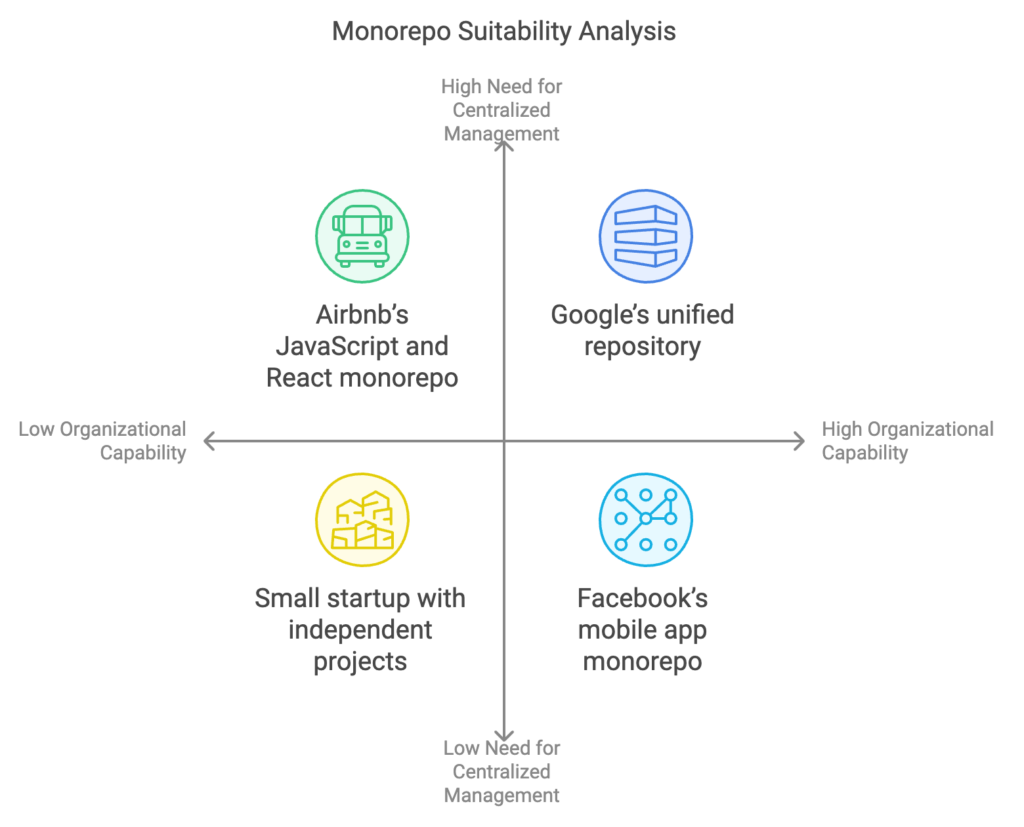
- When You Manage Multiple Interdependent Projects
If your organization develops multiple projects that share libraries, configurations, or frameworks, a monorepo simplifies dependency management. Research by Google, one of the largest proponents of monorepos, shows that their unified repository allows 95% of their code to be built from a shared library system, significantly reducing duplication and inconsistencies. - When Large-Scale Refactoring Is Frequent
Organizations that need to implement frequent cross-project refactoring benefit from monorepos. With a centralized repository, developers can ensure atomic changes across projects. For example, when Airbnb transitioned to a monorepo for its JavaScript and React code, the ability to perform cohesive updates across all services resulted in faster deployments and fewer integration issues. - When Your Teams Work Collaboratively Across Projects
Monorepos shine in environments where multiple teams need to collaborate on interconnected projects. A study published by ACM Digital Library highlights that organizations with centralized repositories report a 30% increase in cross-team efficiency due to reduced barriers in accessing and modifying shared codebases. - When You Aim to Simplify Dependency Management
Managing dependencies across repositories in a multi-repo setup can be challenging. A monorepo centralizes dependency updates, reducing errors from mismatched versions. For example, Facebook leverages a monorepo for its mobile applications to unify dependency management across its Android and iOS teams. - When Your Codebase Relies on Shared Standards and Practices
A monorepo enforces consistent development standards across projects. Teams working within the same repository naturally adopt similar workflows, tools, and conventions. This consistency is particularly useful for large organizations aiming to reduce friction during onboarding or inter-team collaborations. - When Tooling and Infrastructure Can Support Scale
Organizations with robust tooling and infrastructure are better positioned to handle the demands of a monorepo. Companies like Google and Microsoft have invested in custom tools such as Bazel and One Engineering System (1ES) to manage the complexity of large-scale repositories. If your organization can leverage or build similar tools, a monorepo can yield significant productivity gains. - When You Require Atomic Commits Across Projects
If your projects are interdependent, changes often need to be implemented and tested simultaneously across multiple codebases. Monorepos make atomic commits easier, ensuring compatibility across all impacted projects. GitHub’s move to a monorepo for its Actions workflows allowed seamless updates across all dependent systems with a single commit. - When Scalability Is a Priority
A centralized repository can scale effectively if the organization has the necessary build and testing systems in place. Research by ThoughtWorks indicates that large-scale development teams using monorepos can reduce build times by 40% when using optimized build tools.
Monorepos are ideal for organizations with interdependent projects, collaborative teams, and a need for centralized management. However, careful planning and investment in tooling are critical to unlocking its potential benefits. Adopting a monorepo architecture is a strategic decision that should align with your technical capabilities and organizational goals.
When Shouldn’t You Use Monorepo Architecture?
Monorepo architecture consolidates multiple projects into a single repository, offering benefits like streamlined collaboration and simplified dependency management. However, it’s not universally suitable. Consider avoiding a monorepo approach in the following scenarios:
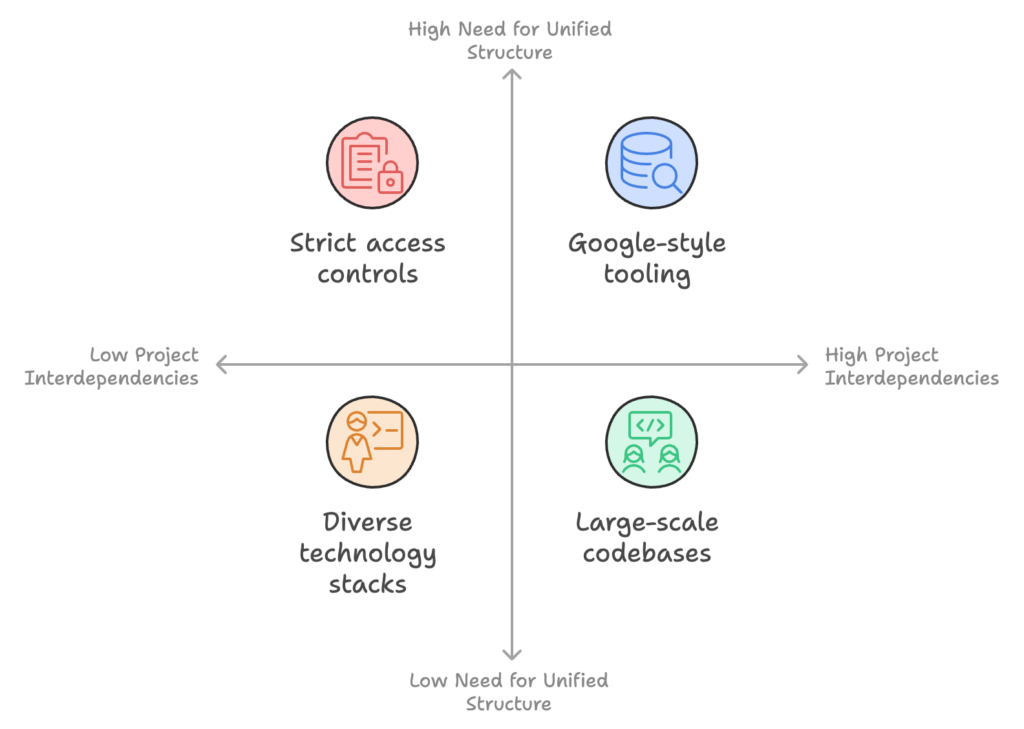
- Projects with Minimal Interdependencies
If your projects operate independently with little to no shared code or dependencies, a monorepo may introduce unnecessary complexity. Managing unrelated projects within a single repository can lead to confusion and complicate version control processes. - Diverse Technology Stacks
When projects utilize different programming languages, frameworks, or build tools, a monorepo can become cumbersome. The need to accommodate various toolchains within one repository may result in intricate build configurations and increased maintenance overhead. - Large-Scale Codebases Without Adequate Tooling
Monorepos can become unwieldy as the codebase grows, leading to longer build times and performance issues. Organizations like Google have developed specialized tools to manage their extensive monorepos effectively. Without such tooling, handling a large monorepo can be challenging. - Teams Requiring Strict Access Controls
In environments where different teams need isolated access to specific projects, a monorepo’s unified structure can pose security challenges. Implementing granular access controls within a monorepo is complex and may not meet stringent security requirements. - Distinct Release Cycles
Projects with varying release schedules may face coordination difficulties in a monorepo. The interconnected nature of the repository can lead to unintended dependencies, complicating independent project releases.
In such cases, adopting a multirepo architecture allows for greater flexibility, tailored tooling, and autonomy, aligning better with the specific needs of each project and team.
What is a Multirepo Architecture?
A multi-repo architecture is a repository management approach where each project, service, or component within a system is stored in its own dedicated repository. Unlike monorepos, where all projects are consolidated in a single repository, multi-repo architecture decentralizes code management, providing each project with an independent repository. This separation allows teams to manage, develop, and deploy their projects autonomously.
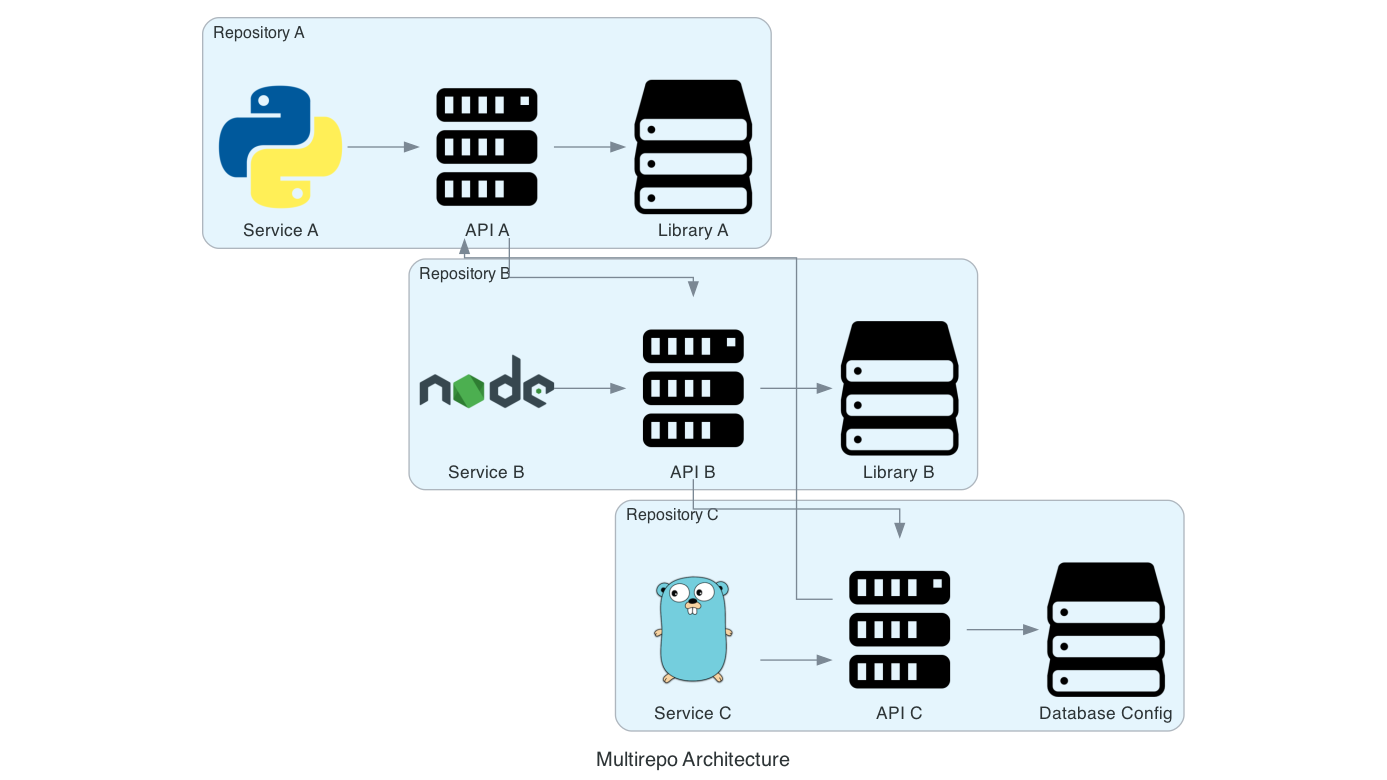
In a multi-repo setup, every repository is self-contained, containing the codebase, dependencies, configurations, and history relevant to that specific project or service. Dependencies between repositories are explicitly defined, often through versioned packages or APIs, ensuring clear boundaries between projects.
How Does a Multirepo Architecture Look?
In a multi-repo setup, each repository operates independently. Here’s a high-level representation of a multi-repo structure:
- Independent Repositories:
Each repository is dedicated to a single project, microservice, or library. These repositories are usually hosted on platforms like GitHub, GitLab, or Bitbucket, and each repository maintains its own version control, commit history, and branching strategy. - Explicit Dependencies:
Projects interact with each other through well-defined interfaces, such as APIs or shared libraries. Dependencies are typically managed via package managers like npm, Maven, or PyPI, ensuring that each project uses the correct version of a shared resource. - Decentralized Access Control:
Access permissions are defined on a per-repository basis. For example, one team might have write access to Repository A but only read access to Repository B, enabling granular control over who can modify code. - Autonomous Development Workflows:
Each repository follows its own lifecycle, with independent build, test, and deployment pipelines. This autonomy allows teams to work without being affected by changes or issues in other repositories.
Advantages and Disadvantages of Multirepo Architecture
The multi-repo architecture is a widely used approach in software development, especially in organizations prioritizing modularity and independent workflows. By dividing projects into separate repositories, this architecture fosters autonomy and simplifies the management of isolated codebases. However, like any architectural choice, it comes with its own set of strengths and challenges.
Below is a detailed comparison of the advantages and disadvantages of a multi-repo setup:
| Advantages | Disadvantages |
|---|---|
| 1. Modular Development: Each repository operates independently, enabling clear separation of concerns. | 1. Cross-Repository Dependency Management: Managing dependencies across repositories can be complex and error-prone. |
| 2. Autonomy for Teams: Teams have complete control over their repositories, allowing them to adopt workflows that suit their needs. | 2. Limited Code Reuse: Sharing libraries between repositories often requires additional configuration and versioning tools. |
| 3. Simplified Access Control: Permissions can be managed on a per-repository basis, ensuring better security and team isolation. | 3. Coordination Challenges: Synchronizing changes across repositories can lead to delays and potential misalignments. |
| 4. Easier to Scale CI/CD Pipelines: Each repository can have its own build and deployment pipeline, reducing contention and build times. | 4. Increased Operational Overhead: Managing multiple repositories requires more effort in terms of tooling, maintenance, and monitoring. |
| 5. Smaller Repository Sizes: Individual repositories are smaller and faster to clone, which improves developer productivity. | 5. Fragmented Codebase: Searching or understanding the full codebase across repositories can be cumbersome. |
| 6. Independent Versioning: Each repository can maintain its own versioning system, reducing conflicts during updates. | 6. Harder Refactoring Across Repositories: Changes impacting multiple repositories require careful coordination and extensive testing. |
| 7. Adaptability to Diverse Tech Stacks: Each repository can use a different language, framework, or toolchain, catering to diverse project requirements. | 7. Redundant Workflows: Teams may duplicate efforts, such as creating and managing similar CI/CD configurations across repositories. |
| 8. Focused Project History: Commit history remains clean and relevant to the specific project, simplifying audits and rollbacks. | 8. Higher Barrier for Collaboration: Developers may find it harder to navigate multiple repositories to contribute to cross-project issues. |
While multi-repo architectures provide flexibility and autonomy, they can introduce operational complexities and challenges in collaboration, especially as the number of repositories grows. Addressing these challenges requires robust dependency management tools, clear communication between teams, and an investment in consistent workflows across repositories.
Understanding these trade-offs is essential when deciding whether a multi-repo architecture aligns with your organization’s development and operational priorities. This architecture can be highly effective with the right tooling and processes, but it requires careful planning to unlock its full potential.
When Should You Use Multi-Repo Architecture?
Multi-repo architecture is an excellent choice for organizations aiming for modularity, team autonomy, and project isolation. However, it’s not universally applicable and depends on specific use cases, technical considerations, and organizational goals. Below are scenarios where multi-repo architecture is suitable, supported by data and research:
- When Projects Are Independent or Loosely Coupled
If your projects have minimal dependencies on each other, multi-repo architecture ensures clean separation. Independent repositories allow teams to focus on their specific domains without worrying about cross-project integration. A study from ThoughtWorks highlights that organizations with loosely coupled projects reported a 25% reduction in integration conflicts when using multi-repos. - When You Have Distinct Development Teams
For large organizations with multiple teams working on different services or applications, multi-repos provide autonomy. Each team can manage its own repository, toolchain, and versioning without being impacted by changes in other repositories. For example, Netflix adopts a multi-repo approach for its microservices to enable decentralized workflows while maintaining operational flexibility. - When Your Tech Stack Is Diverse
Multi-repo architecture is ideal for organizations using multiple languages, frameworks, or technologies. By keeping projects in separate repositories, each can maintain its unique build pipelines and dependencies. Companies with diverse stacks, like Uber, leverage multi-repos to enable their teams to use the tools and environments best suited for their services. - When Scaling CI/CD Pipelines Is a Priority
In multi-repos, each project can have its own CI/CD pipeline, reducing bottlenecks in shared infrastructure. Research by CircleCI shows that teams using independent pipelines for separate repositories achieve faster build times and fewer resource conflicts. - When Security and Access Control Are Critical
Multi-repos allow granular access control, restricting who can view or modify code in specific repositories. This feature is particularly useful for organizations handling sensitive or regulated data, ensuring compliance with industry standards like GDPR or HIPAA. - When Smaller Repository Sizes Are Preferable
Smaller repositories are easier and faster to clone, making them ideal for teams that frequently onboard new developers or work in environments with limited bandwidth. A GitHub report indicates that developers working with smaller repositories experience a 15% improvement in productivity during onboarding.
When Should You Avoid Multi-Repo Architecture?
- When Projects Are Highly Interdependent
If your projects rely heavily on shared libraries or configurations, managing dependencies across multiple repositories can become complex and error-prone. Research from ACM Digital Library highlights that organizations with tightly coupled projects using multi-repos face a 30% increase in integration issues compared to those using monorepos. - When Cross-Repository Refactoring Is Common
Frequent refactoring across projects is cumbersome in a multi-repo setup, as changes need to be coordinated across repositories. Google’s research into repository architectures indicates that monorepos are more efficient for organizations requiring large-scale refactoring due to their atomic change capabilities. - When Collaboration Between Teams Is Frequent
Multi-repo architectures can hinder collaboration between teams working on interdependent projects. Developers may need to switch contexts between repositories, leading to inefficiencies. According to Stack Overflow’s 2023 Developer Survey, developers in multi-repo environments reported a 20% increase in time spent on cross-repository navigation compared to those in monorepos. - When Build and Deployment Processes Need Centralization
Multi-repos require separate build pipelines for each repository, which can lead to duplicated effort and increased operational overhead. Organizations with limited DevOps resources might struggle to maintain multiple CI/CD workflows effectively. - When Unified Versioning Is Required
If your projects need to stay in sync with consistent versioning, a multi-repo setup can introduce challenges. Updating shared dependencies across multiple repositories can lead to version mismatches and breakages in dependent systems.
What is Monolith Architecture?
Monolithic architecture is a traditional software design model where all components of an application are integrated into a single, unified codebase. In this architecture, the various functionalities of the application—such as user interface, business logic, and database access—are tightly coupled and operate as one cohesive unit. This means that any change in one part of the application may require modifications across multiple components, leading to a complex interdependency among them.
Here are the key characteristics of a Monolithic Architecture:
- Single Codebase: The entire application is built and maintained as one codebase, which simplifies initial development but complicates future modifications.
- Tight Coupling: Components are heavily interdependent, making it difficult to isolate issues or implement changes without affecting other parts of the application.
- Single Deployment Unit: The application is deployed as a single executable file or package, meaning updates require redeploying the entire system.
- Shared Database: Typically utilizes a single database for all components, which can lead to bottlenecks and challenges in scaling.
For example, consider an e-commerce application that includes various functionalities such as user registration, product browsing, shopping cart management, and order processing. In a monolithic architecture, all these features would be part of one large application. For instance, if the product catalog needs an update, the entire application must be recompiled and redeployed to reflect that change.
Differences Between Monolithic Architecture and Other Architectures
To better understand how monolithic architecture compares with microservices and monorepo architectures, a detailed comparison table is provided below:
| Aspect | Monolithic Architecture | Microservices Architecture | Monorepo Architecture |
|---|---|---|---|
| Architecture Type | Single-tier architecture | Multi-tier architecture | Unified repository for multiple projects |
| Component Coupling | Tightly coupled | Loosely coupled | Varies; projects can be independent |
| Deployment | Deployed as a single unit | Individual services can be deployed independently | All projects in one repository but can be deployed separately |
| Scalability | Challenging; must scale entire application | Easier; individual services can scale independently | Varies based on project needs |
| Development Complexity | Simpler initially but complex over time | More complex due to multiple services | Simpler management of shared code |
| Technology Flexibility | Limited; often constrained to a single stack | High; different technologies for each service | High; various projects can use different stacks |
| Fault Tolerance | Entire application may fail if one part fails | Individual services can fail without affecting others | Depends on project dependencies |
| Maintenance | Easier initially but harder as complexity grows | Requires more effort to manage multiple services | Easier code sharing but can complicate integration |
Monolithic architecture serves well for smaller applications or projects where simplicity is paramount. However, as applications grow in complexity and scale, the limitations of this architecture become apparent compared to microservices and monorepo approaches. Microservices offer greater flexibility and scalability by allowing independent development and deployment of services, while monorepo architecture facilitates better collaboration across teams working on different projects within a unified codebase. Understanding these differences is crucial for selecting the right architectural style based on specific project requirements and future growth expectations.
What to Choose Between Monorepo, Multirepo, and Monolithic Architecture?
Choosing between monorepo, multirepo, and monolithic architecture requires evaluating your project requirements, team dynamics, and scalability needs. While each architecture has its strengths, the decision should focus on aligning the architecture with your organization’s workflows and long-term objectives. Here’s how you can make an informed choice.
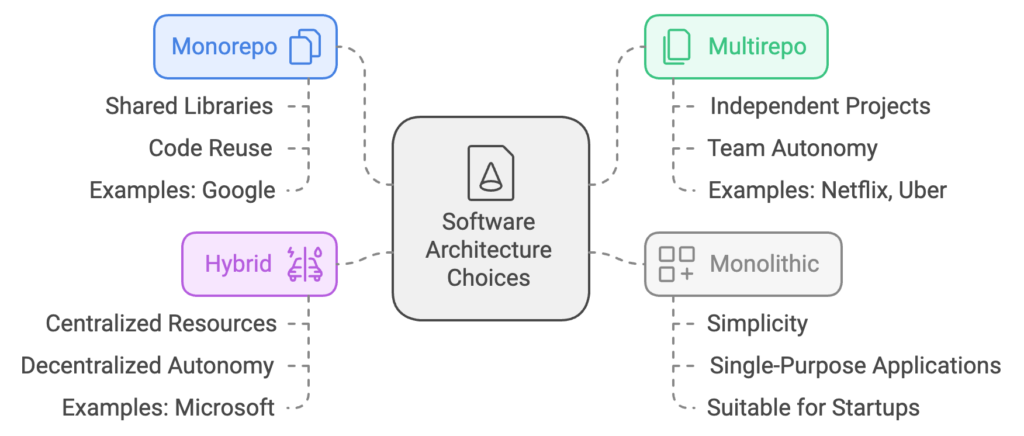
If your organization relies heavily on shared libraries, code reuse, or synchronized workflows, a monorepo is often the best fit. Companies like Google have demonstrated the power of monorepos in managing large-scale, interdependent projects. By centralizing all projects within a single repository, monorepos make it easier to implement cross-project changes, streamline dependency updates, and maintain a cohesive codebase. For example, if you have multiple teams working on different services that depend on shared libraries, a monorepo ensures consistency and reduces duplication of effort.
On the other hand, multirepo architecture works better when projects are independent or loosely coupled. Organizations like Netflix and Uber use multirepos to manage their microservices. Each repository operates independently, allowing teams to have full autonomy over their workflows, tools, and deployment pipelines. This is particularly useful when teams work on services built with different tech stacks or when dependencies between projects are minimal. For instance, if your backend services are written in Python, your frontend is in React, and your mobile app is in Swift, multirepos allow each team to focus on their specific environment without interference.
For simpler projects or when your application is tightly coupled, monolithic architecture can be the most straightforward solution. Monoliths are ideal for early-stage startups or small teams developing single-purpose applications. By keeping everything within a single codebase, monoliths reduce overhead, simplify development, and allow for faster deployments. However, as your project grows, the lack of modularity may become a limitation, requiring a transition to a more flexible architecture.
A hybrid approach can also be effective for organizations with diverse needs. For example, you might use a monorepo for shared libraries or core components while maintaining multirepos for independent services. Microsoft employs this strategy, balancing centralized resources with decentralized project autonomy. This hybrid model can offer the flexibility to adapt to different workflows while maintaining consistency across shared assets.
Ultimately, the right choice depends on your organization’s specific context. Monorepos are best for projects with shared dependencies and high collaboration, multirepos excel in scenarios with independent teams and tech stacks, and monolithic architecture suits smaller, tightly coupled systems. Evaluate your current challenges, future scalability requirements, and team workflows to select the architecture that aligns with your goals.
Conclusion
Choosing the right repository architecture is a foundational decision that impacts the scalability, collaboration, and maintainability of your projects. Both monorepo and multirepo architectures offer distinct advantages and challenges, making the choice dependent on your organization’s needs, team structure, and project dynamics.
Monorepo architecture excels in environments with shared dependencies, frequent cross-project collaboration, and the need for centralized management. It simplifies refactoring, enhances code reuse, and provides a unified workflow, but requires robust tooling to handle its complexity.
Multirepo architecture, on the other hand, thrives in scenarios with independent teams, diverse tech stacks, and modular projects. It enables autonomy, simplifies access control, and scales naturally with organizational growth but demands more effort for dependency management and cross-repository coordination.
Ultimately, there is no one-size-fits-all solution. The key lies in evaluating your current workflows, dependencies, and future growth plans to determine which architecture aligns best with your objectives. Whether you choose monorepo, multirepo, or even a hybrid approach, thoughtful implementation and strategic tooling will ensure your repository architecture supports your development goals effectively.
People Also ask For:
How do monorepos handle dependency management compared to multirepos?
In a monorepo, dependencies are centralized, allowing shared libraries and modules to be easily referenced across projects. This centralization simplifies updates and ensures consistency. However, it requires robust tooling to manage dependencies effectively. In contrast, multirepos manage dependencies separately for each repository, providing teams with autonomy but potentially leading to version mismatches and increased complexity in maintaining consistency across projects.
What are the security implications of using a monorepo versus a multirepo?
Monorepos offer centralized access control, which can simplify security management by providing a single point for implementing policies. However, this centralization means that access to the monorepo grants access to all projects within it, which may not be desirable for all organizations. Multirepos allow for granular access control, enabling teams to restrict access to specific repositories as needed, which can enhance security by limiting exposure.
How does the choice between monorepo and multirepo affect continuous integration and deployment (CI/CD) pipelines?
Monorepos can streamline CI/CD pipelines by enabling unified build and deployment processes, which can reduce complexity and enhance efficiency. However, as the codebase grows, build times can increase, necessitating advanced tooling to manage builds effectively. Multirepos allow each repository to have its own CI/CD pipeline, providing flexibility but potentially leading to duplicated efforts and inconsistencies in deployment processes across projects.
Can a monorepo lead to a monolithic application structure?
A monorepo is not synonymous with a monolithic application. It’s a version control strategy where multiple projects reside in a single repository. These projects can still be developed and deployed as independent services or microservices. The key is to maintain clear boundaries and modularity within the codebase to prevent it from becoming monolithic.
How does onboarding differ between monorepo and multirepo setups?
Monorepos can simplify onboarding by providing new developers with access to all projects in a single repository, offering a comprehensive view of the codebase. This setup facilitates understanding of inter-project relationships. In contrast, multirepos require new team members to access multiple repositories, which can make it more challenging to grasp the overall system architecture and dependencies.
